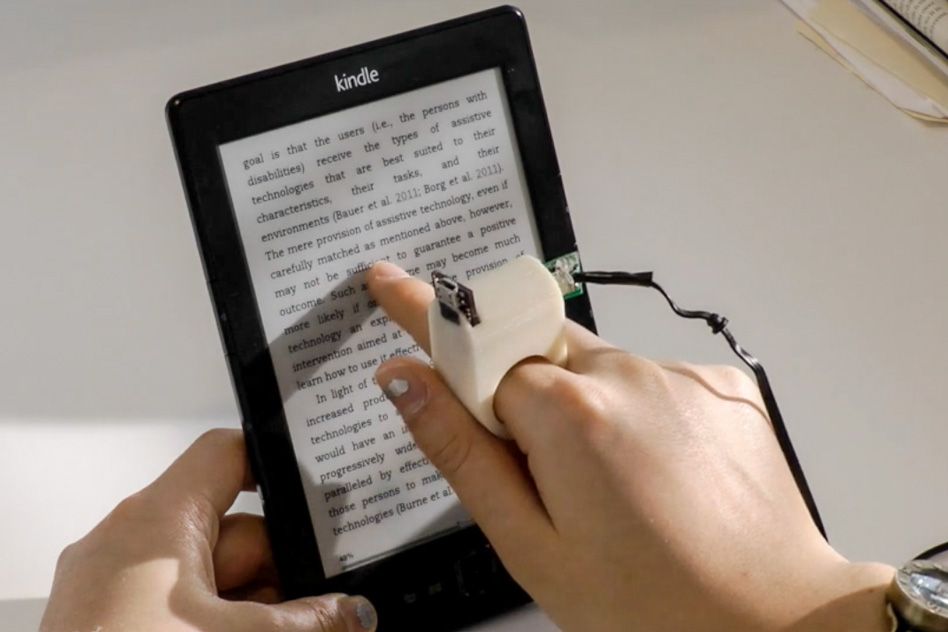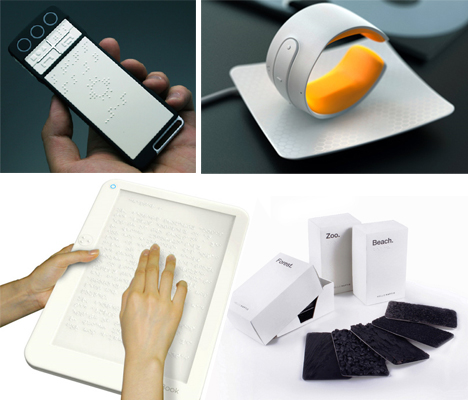Discover Ingenious Tools Developed for the Aesthetically Damaged
The growth of ingenious tools for the visually damaged represents a significant advancement in accessibility and freedom. Technologies such as clever glasses with AI abilities and mobile applications created to provide acoustic summaries are reshaping everyday experiences for users. In addition, wearable gadgets that utilize haptic responses enhance environmental awareness, while modern-day Braille innovations offer brand-new methods to engage with message. As these tools proceed to evolve, their influence on the lives of those with visual disabilities increases crucial inquiries about the future of inclusivity and autonomy in different facets of life. What lies in advance in this technological landscape?
Smart Glasses for Navigating

Smart glasses developed for navigation are transforming the way visually impaired people connect with their atmosphere. These advanced gadgets utilize a mix of cam innovation, expert system, and acoustic responses to offer real-time info about surroundings. By using challenge detection systems, smart glasses can inform individuals to prospective hazards, making it possible for more secure movement in both familiar and unknown setups.
The combination of GPS technology better enhances navigation capacities, permitting users to get acoustic directions as they move. This hands-free strategy not just promotes freedom yet additionally equips aesthetically impaired people to browse urban landscapes with increased confidence. Furthermore, lots of smart glasses are furnished with attributes that recognize landmarks and road indicators, providing contextual details that improves the user experience.
Additionally, the growth of these devices is continuously advancing, with business working to enhance the precision of object recognition and increase the variety of navigational attributes. As wise glasses become a lot more affordable and available, they hold the possible to considerably change life for aesthetically damaged individuals. Eventually, these innovative devices represent a critical action toward inclusivity, offering improved mobility and a higher feeling of autonomy for people navigating the globe around them.

Mobile Application for Daily Living
Exactly how can mobile applications boost the day-to-days live of aesthetically damaged individuals? Mobile apps are transforming the method visually impaired individuals navigate their settings, take care of day-to-day tasks, and access info. These applications give necessary assistance through various capabilities, fostering freedom and enhancing lifestyle.
A number of ingenious mobile applications are made particularly for day-to-day living. For circumstances, applications like Be My Eyes link visually damaged users with sighted volunteers through video telephone calls, allowing them to get real-time assistance with tasks such as reading labels or browsing unknown areas. In A Similar Way, Seeing AI, developed by Microsoft, makes use of artificial intelligence to explain surroundings, checked out text, and recognize objects, efficiently changing a mobile phone into an effective device for daily aid.
In addition, navigating apps tailored for the visually damaged, such as Aira and BlindSquare, provide audio-based directions and environmental info, making it possible for users to traverse their environments safely and confidently. Beyond navigation and prompt assistance, mobile applications also sustain organization and job administration, with functions that help users set pointers, create order of business, and track visits. In recap, mobile applications serve as important sources, empowering aesthetically damaged people to lead more independent and satisfying lives.
Wearable Technologies for Help
Empowerment via innovation is increasingly evident in the realm of wearable devices created to help aesthetically impaired people. These ingenious devices incorporate effortlessly into day-to-day live, improving navigation and supplying vital feedback to users. For instance, wise glasses outfitted with cameras can review and recognize faces message out loud, enabling customers to connect even more confidently in social and specialist settings.
An additional notable improvement is the use of haptic responses systems in wearable gadgets. These systems utilize resonances or other tactile signals to communicate details concerning the individual's environment, such as challenges or modifications in terrain, boosting movement and safety. Wearable innovations additionally include wristbands that attach to smart devices, notifying customers to notices via subtle resonances, hence enhancing connectivity without dependence on visual hints.
As these technologies proceed to advance, they are not just improving freedom for aesthetically impaired individuals but additionally cultivating a higher feeling of inclusion in society. By linking the space between difficulties dealt with in day-to-day living and the capacity for freedom, wearable modern technologies function as crucial devices in the quest for equality and empowerment for those with visual problems.
Sound Description Devices
Sound description tools play a vital duty in boosting access for aesthetically impaired people, offering them with the capability to engage with visual media. Wearable technology for low vision. These devices use narrated summaries of essential aesthetic aspects in movies, tv programs, and live performances, making certain that individuals can totally understand the context and emotions shared via visuals
Sound summary can be incorporated into various systems, consisting of streaming solutions, movie theater screenings, and live movie theater. Numerous popular streaming solutions now consist of audio summary as an access function, allowing customers to choose it easily. Along with conventional media, specialized applications likewise exist, offering audio descriptions for art exhibits, museums, and various other social events.
The effectiveness of audio description pivots on the skill of the narrators, who should share aesthetic details succinctly without interfering with the original sound. Advancements in this field are also leading the way for more tailored experiences, where users can readjust the degree of information and pacing according to their choices.
Braille Innovations and Gadgets
Braille gadgets and advancements have substantially transformed the method aesthetically damaged people interact with text and information. Modern advancements have led to the advancement of versatile devices that improve proficiency and freedom amongst customers.
Additionally, mobile Braille notetakers incorporate conventional Braille input with modern-day functionalities, facilitating note-taking, scheduling, and document editing on the move. OCR devices for the blind. These compact gadgets usually include text-to-speech abilities, bridging the void between Braille and acoustic info
Additionally, ingenious Braille printers have emerged, permitting customers to create Braille labels, records, and educational materials successfully. This access promotes good glasses higher participation in expert and academic environments, inevitably promoting inclusivity.
In addition, research study into clever Braille innovations continues to expand. Instruments that integrate expert system are being checked out to provide real-time navigating support and contextual information, improving the user experience in varied settings. On the whole, these technologies show a dedication to equipping visually impaired individuals via innovation, guaranteeing they can easily gain website link access to and involve with the world around them.

Verdict
The improvement of ingenious devices for the aesthetically damaged substantially improves self-reliance and quality of life. These modern technologies not only foster better addition however also advertise autonomy in daily tasks, eventually contributing to a more accessible and fair society for aesthetically damaged individuals.
As wise glasses end up being more obtainable and affordable, they hold the prospective to significantly change everyday life for visually damaged users. Mobile applications are reinventing the way aesthetically damaged individuals browse their settings, take care of everyday jobs, and accessibility info. Apps like Be My Eyes attach visually impaired individuals with sighted volunteers using video phone calls, permitting them to my sources obtain real-time assistance with tasks such as checking out tags or browsing unfamiliar spaces.Additionally, navigating applications customized for the aesthetically damaged, such as Aira and BlindSquare, use audio-based instructions and ecological information, enabling individuals to traverse their surroundings securely and with confidence.The innovation of cutting-edge tools for the visually impaired considerably improves self-reliance and high quality of life.